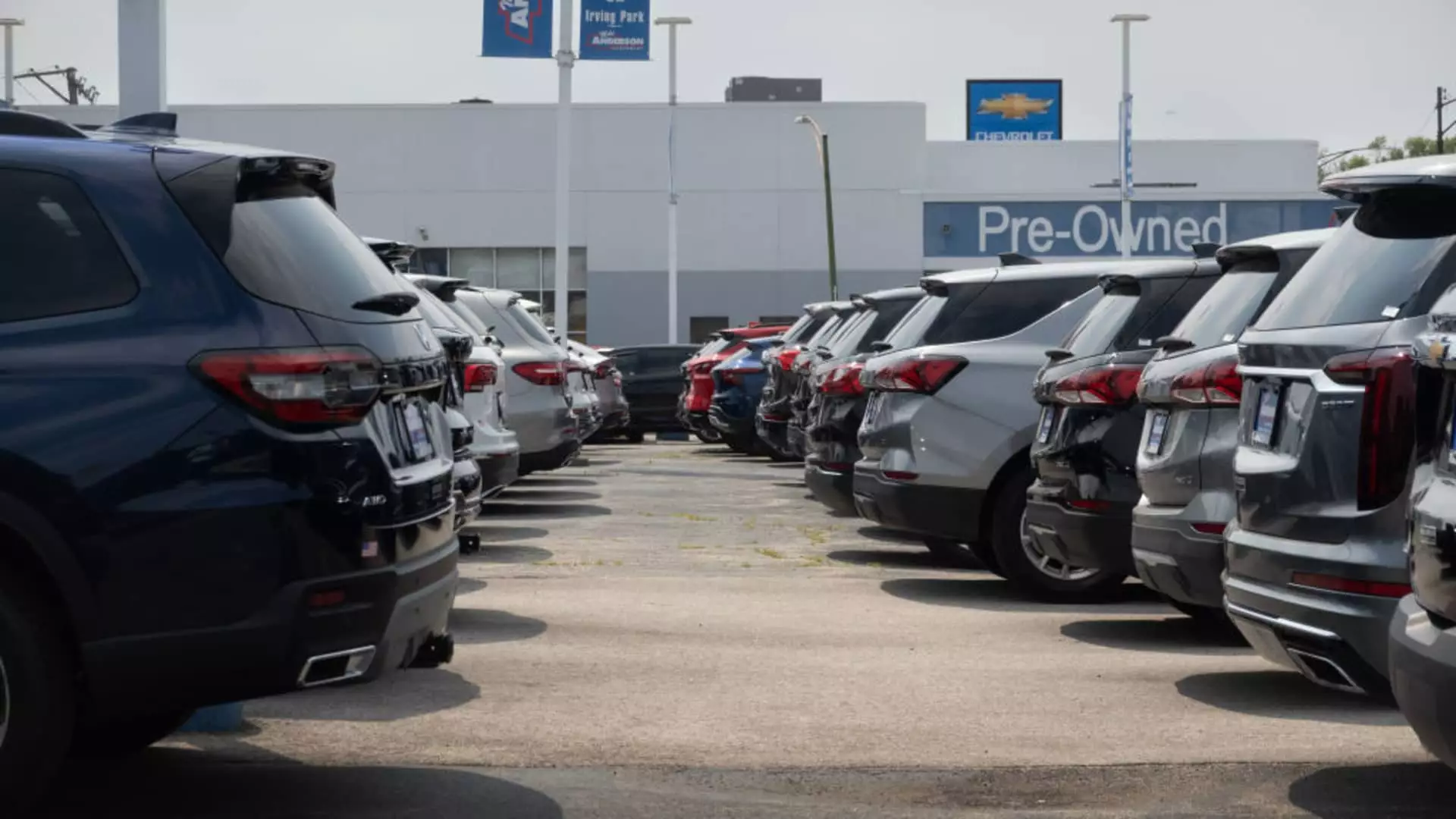In the current financial landscape, a notable trend has emerged among American borrowers—with many finding themselves in an unfavorable position regarding their auto loans. A recent report from Edmunds.com highlights a concerning statistic: the average consumer now owes a staggering $6,458 on their vehicle, outpacing the car’s actual market value. As of the third quarter of this year, this figure marks an increase from $6,255 in the previous quarter and a significant rise from $5,808 just one year ago. This phenomenon, often termed as being “upside-down” on a loan, has broader implications for both individual consumers and the economy at large.
The situation of increasing negative equity is troubling chiefly because it signals financial strain among borrowers. According to the Federal Reserve, the last couple of months has seen auto loan delinquency rates rise sharply, significantly higher than the pre-pandemic baselines. During the pandemic, these rates fell to unprecedented lows, creating a false sense of security for many consumers. Yet as the auto market has begun to stabilize post-pandemic, the pressures of inflation, higher interest rates, and the burdens of changing economic conditions have reared their heads. Jessica Caldwell from Edmunds has famously articulated that while owing modest sums beyond a vehicle’s worth may not spell disaster, the alarming number of individuals grappling with figures exceeding $10,000 or even $15,000 raises legitimate concerns.
Interestingly, over 20% of consumers with negative equity owe more than $10,000—7.5% of which find themselves buried with debts exceeding $15,000. This situation leads to a grim cycle where borrowers might struggle to trade in their vehicles, often leading to the purchase of new loans that compound existing financial issues. As Ivan Drury, another Edmunds insight leader, points out, the reality of long-term loans, particularly seven-year terms, often results in consumers being caught in this equity trap. Individuals frequently overlook the total cost of ownership in favor of focusing solely on monthly payments, which can pave the way for deeper financial woes down the line.
Consumers facing the risk of negative equity need to strategize their approach to vehicle ownership. One key solution is to retain the vehicle for a longer duration, allowing time for the loan balance to reduce in tandem with the car’s depreciation. Furthermore, regular vehicle maintenance can prevent unexpected costs while promoting longevity in ownership. Awareness and proactive management of debt can offer a buffer against drastic financial repercussions. Additionally, buyers looking to navigate shifting market conditions must assess their buying habits cautiously—especially in an environment where pricing and interest rates have reached historic heights.
The current situation largely stems from a wave of consumers who purchased vehicles during the disruptive period of 2021 and 2022. Faced with limited inventory and soaring prices due to pandemic-induced constraints, many paid inflated costs, resulting in rapid depreciation post-purchase. As the market normalizes, those earlier decisions are casting long shadows over contemporary financial health. Reflecting on these events draws attention to the critical need for informed consumer practices in navigating the auto loan landscape.
The rise in upside-down auto loans is a growing concern that speaks to wider trends in consumer finance and economic stress. Consumers must adopt informed and strategic approaches to avoid becoming ensnared in negative equity, ensuring that future purchases remain manageable within the evolving financial realities.

